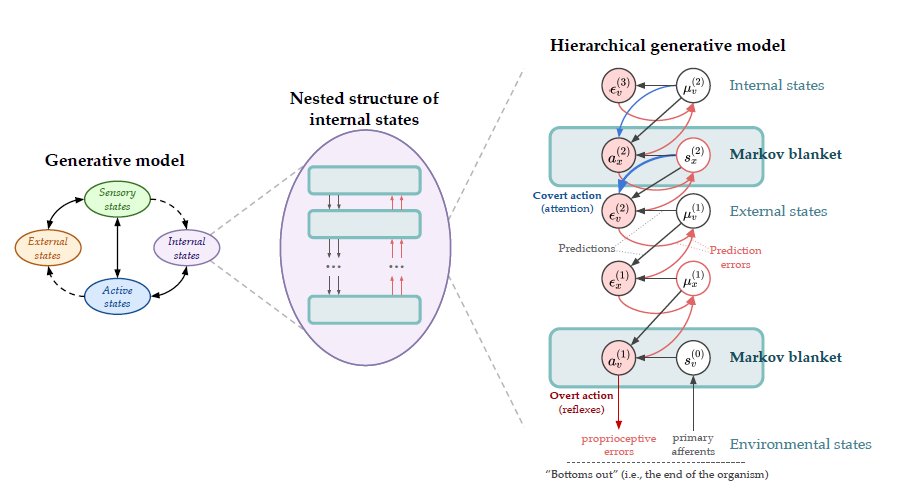🚨🧠 Preprint alert 🧠🚨 Stoked to share “The inner screen model of consciousness,” which presents a model of #consciousness based on the free-energy principle #FEP, written with @MahaultAlbarra1, @exilefaker, @jkbren, Fields, Friston, & @adamsafron 1/11
psyarxiv.com/6afs3
psyarxiv.com/6afs3
Much debate has occurred over whether the FEP per se has anything to say about consciousness. We present an affirmative answer to this question, and provide a model of consciousness that follows directly from applying the FEP to model well known human neuroanatomy 2/11 

🖥️ We build on the “inner screen hypothesis,” originally proposed by Chris Fields, Jim Glazebrook, and @drmichaellevin, which suggests that a core feature of conscious systems is an internal boundary or screen, separating it into at least two distinguishable components 3/11 

This hypothesis builds on the quantum information theoretic formulation of the FEP (qFEP), developed by Fields and colleagues for the last few years. The qFEP formulation is scale-free, and draws from the holographic principle in physics (see sciencedirect.com/science/articl…) 4/11
📽️ The quantum information theoretic lens enables us to cast the boundaries of physical systems (i.e., their Markov blankets) as holographic screens, and to model interactions between two systems as reading and writing on, or projecting onto, a holographic screen 5/11
We reframe classical predictive coding hierarchies using the qFEP formulation, emphasizing that each level of the processing hierarchy has its own Markov blanket, via which it interacts with other systems, and that the whole set of screens has a nested, holographic structure 6/11 



We suggest that consciousness may be linked to deeper levels of the nested stack, and that subcortical neuromodulatory systems play essential roles for consciousness, with “mental solids” (in @Mark_Solms’s terms) evinced by subcortical projections 7/11 

On the present account, consciousness is an attribute of things that, like brains, possess an irreducible Markov blanket, whose active states (in the case of the brain) exert a neuromodulatory influence over (external) neuronal dynamics 8/11
Because these internal states cannot be further partitioned, no subset can be influenced by active states, implying that consciousness must be phenomenologically transparent, in @ThomasMetzinger’s terms 9/11
🎭 Finally, embracing a radical and fresh take on Cartesianism, we propose an observer-relative dualism between states that are internal and external to a Markov blanket 10/11
We’re thankful to Philippe Blouin, @introspection, @JonasHMago, @DavidRudrauf, @math_gregoire, @anilkseth, @tobysmithe, @JeffYoshimi, Robert Worden, to the members of the CompPhen Fridays discussion group, and @VERSESAI. Special thanks to @hohwy, @Mark_Solms, and Ken Williford
• • •
Missing some Tweet in this thread? You can try to
force a refresh

 Read on Twitter
Read on Twitter



